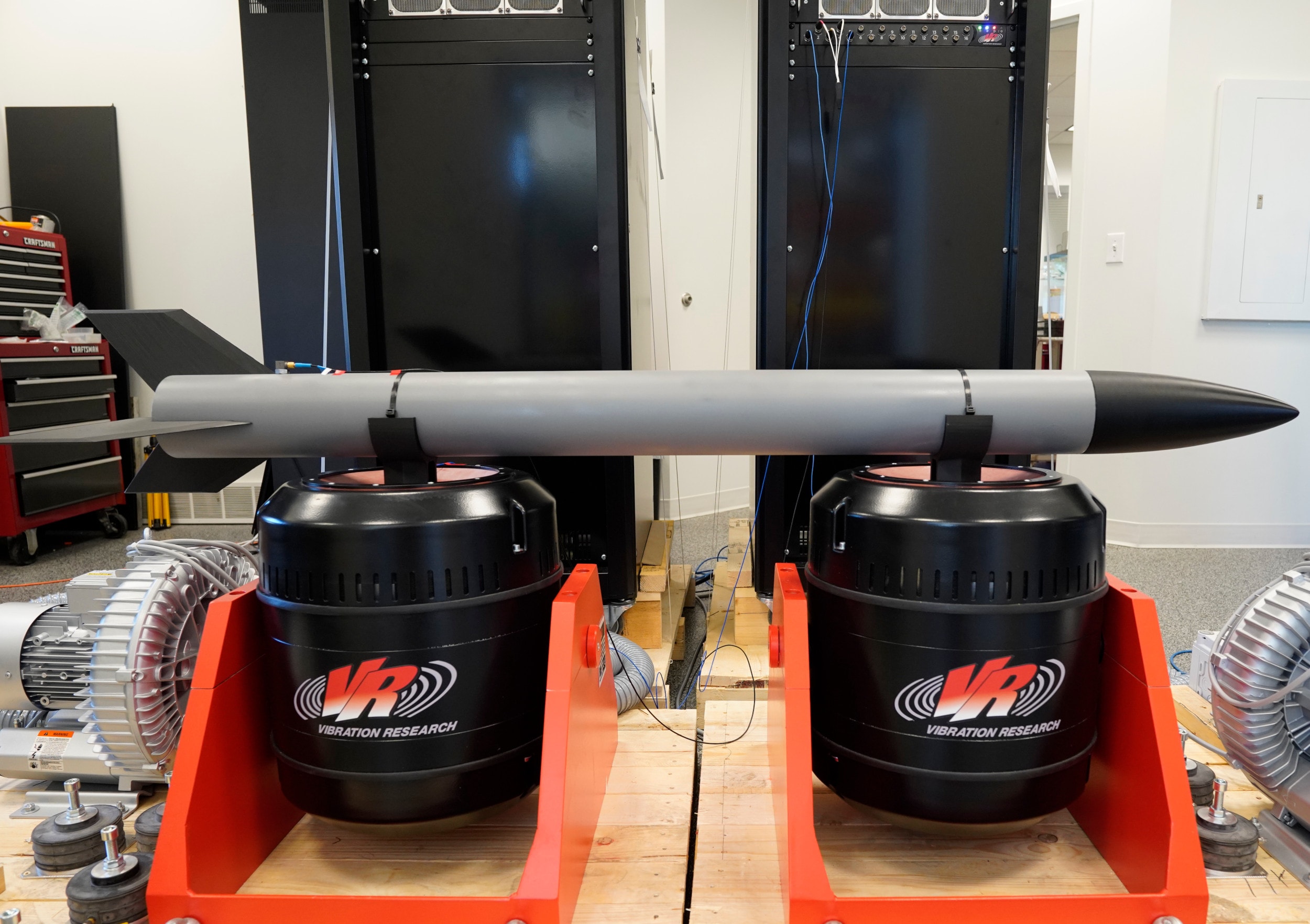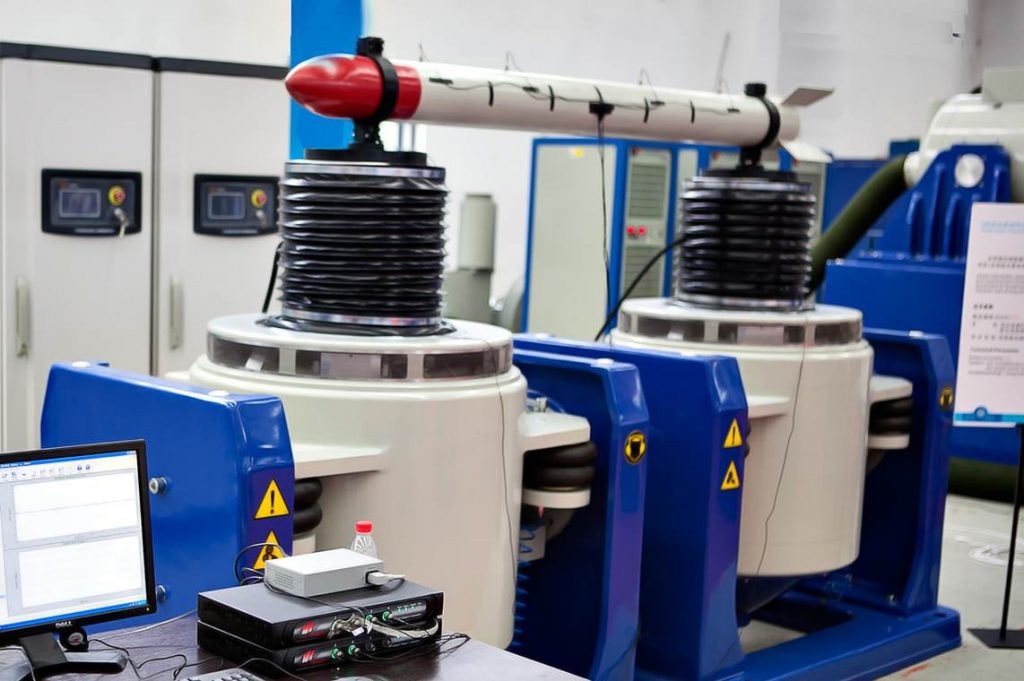Most vibration testing is performed on a shaker, whether electrodynamic, servo-hydraulic, or another type. In some cases, however, it may be impractical to mount an oversized or heavy device under test (DUT) on a single shaker. While large shaker systems are available, there is a tradeoff between a shaker’s size and frequency range.
Adding another shaker to a control system may be the solution when a test technician is experiencing issues running their DUT on a single shaker. A system with two or more shakers requires multiple control loops so we refer to them as multi-loop systems.
Why Multi-loop?

There are two main reasons for selecting multi-loop control. The first has to do with a shaker’s force rating.
Shaker manufacturers use the equation force = mass x acceleration as the basis for sizing shakers. The more mass a shaker has the less acceleration it can produce and vice versa. Technicians must include all moving masses in the f=ma calculation, including the weight of the shaker armature.
Vibration shakers have a force rating that determines the achievable combination of mass and acceleration. If a system’s mass exceeds the shaker’s force rating, the technician can size up to a bigger shaker at the expense of the available frequency range. If the technician cannot sacrifice the frequency bandwidth or the bigger shaker exceeds the budget, they might consider adding a second shaker.
The force rating of a vibration testing system doubles with two shakers. The weight is distributed between the shakers, allowing for greater bandwidth than one shaker.
Again, a shaker’s mass includes all moving parts, and the weight of two shakers and a custom head expander may be just as restrictive as a single shaker. The technician needs to find the correct balance of mass and acceleration to determine which setup best fits the test situation.
Field Environment
An engineer may also select a multi-loop system if the DUT is mounted at multiple points in the field environment. For example, an aircraft component may be attached to the aircraft at two points. In this instance, a test setup with two fixed mounting points would better reflect the field, thereby leading to a more realistic test.
Alternatively, an oversized item may not balance on a single shaker and require multiple for stability.

Example: Dual-loop Control
Dual-loop phase control is a type of multi-loop control. Two shakers are in a push-push configuration if they face the same direction. When facing one another, they are in a push-pull configuration.
Notching
When running a vibration test on a large DUT, technicians must account for resonances throughout the structure. Test levels suitable at the fixed point may excite the resonance at the free ends. In such instances, the technician may need to limit the response at one or several points to avoid damage. Notching is a technique they can use to limit vibration levels at various frequencies during testing. LEARN MORE.
Phase Control
Multiple shakers require phase control to ensure no damage comes to the system. If one shaker moves out of phase, then the potential for damage increases, particularly for a rigid DUT. In general, rigid coupling does not work well for multi-loop phase control. Instead, a dynamic coupling of the shakers is ideal, where both shakers monitor the control and adjust the drive when necessary.
Multi-loop phase control in VibrationVIEW synchronizes two or more shakers moving on the same axis while maintaining phase through level changes. It uses 2, 3, or 4 outputs of a VR10500 controller. The drive and COLA outputs from one controller drive multiple shakers with the same test profile. The result is a synchronized set of shakers, ideal for full system testing of a larger device.
